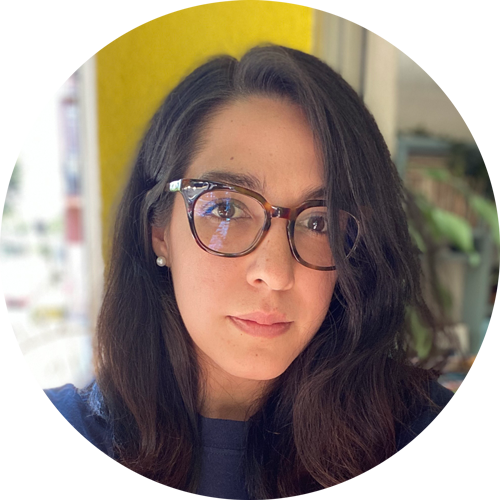Audience measurement is crucial for brands and research agencies looking to obtain high-quality data. This is because if we aren’t measuring, we aren’t learning, much less optimizing. However, the rapid evolution of the digital ecosystem and regulatory changes bring up constant challenges in this work.
In this article, we will examine some of these challenges and present a solution to overcome them: a symphony of high-quality data. But first, let’s find out what lessons 2022 left us around audience measurement.
Audience measurement: Lessons from 2022 to obtain high-quality data
2022 shed light on great unknowns related to the model for acquiring high-quality data. Some of the most relevant lessons were:
1. A strategic focus in audience measurement
In 2022, we saw that verified audience measurement should be the strategic focus for high-quality data in marketing. In addition, we saw how results-based advertising efforts and budgets are ultimately here to stay.
Today, in early 2023, we can confirm that important steps have been made toward those two objectives, although they have not been completely consolidated in the sector.
2. Accuracy in measurement as a non-negotiable
We have also learned that having a single-source panel makes it possible for us to get numbers from highly optimized measurements, compared to using differentiated samples—in particular, when it comes to cross-media campaigns.
Nevertheless, how can we ensure this when we know that users consume content on multiple devices at the same time? One solution is to use tools that enable measuring “de-duplicated” audiences. In other words, tools that help us identify how many unique individuals saw our advertisement across different channels and devices.
Relevant challenges for brands and market research agencies
Now, it’s no secret that brands continue to seek to expand their presence across differing communication channels. This represents various challenges in measuring high-quality data, both for them and for research agencies. Let’s take a look at some examples:
- Measurement across multiple channels: As brands are increasingly present on more channels (including TV, radio, press, digital, social media), measuring their audiences becomes more complex upon having to monitor and analyze data on each channel.
- Audience fragmentation: In addition, each user consumes information and entertainment on different media and different devices. This makes it difficult to identify behavior patterns and to obtain high-quality data in large groups.
- Results measurement with limited budgets: As we know, advertising budgets have been affected by the global economic recession. However, brands do not lower their expectations for results. This compels them to maximize available resources, investing only in channels and strategies with the highest return on investment (ROI).
Substantive solutions to achieve high-quality data
In the face of new challenges faced by marketing researchers and professionals to measure more effectively, as well as a more comprehensive perspective on the consumer, there are new tools that enable combining declared data (opinions) and behavioral data to glean more accurate insights about consumer habits.
However, some of the most common questions that emerge about this include:
- What is the correct way to integrate high-quality declared and behavioral data in a research project?
- When should I request declared data?
- When is it necessary to analyze study participants’ online activity?
- How is high-quality data based on online consumer behavior collected?
Netquest has the answer to these and more questions with its “Symphony of Data” concept.
What does it mean to collect high-quality data using the Symphony of Data?
Over the years, at Netquest, we have strived to develop key solutions to gather detailed information on consumer behavior and preferences. That’s why we created our Symphony of Data.
To understand this concept, let’s think about the definition of “symphony” first. According to Collins dictionary, this word refers to anything characterized by a harmonious combination of elements. For us, this is also applicable in audience measurement. Different types of data can be combined, making the chords strum together to deliver a complete melody about the consumer.
In that sense, the types of data that can compose a symphony include:
- Profiling data, which includes basic sociodemographic information as well as segmentation by specific variables.
- Behavioral data, which analyzes consumers’ online activity to detect buying journeys, most used sites and apps, frequently used search terms, etc.
- Observed audio data (audio-matching) to measure advertising effectiveness and perform content audits using an innovative technology that automatically recognizes ambient sound.
- Opinion data (surveys), which help to discover the degree of brand recall, if consumers liked the campaign they saw, if they intend to purchase a campaign-related product or service, etc.
Below, we walk through an example to understand what this symphony looks like in action. 
The Symphony of Data: An example
Let’s start with profiling data: We have a single, 32-year-old man who owns a Samsung Galaxy S23 and wants to replace it. A few months ago, he bought a new car, and he plans to go on vacation next month.
This provides us with information to segment him, based on his profile, to show him certain ads. While he browses online, behavioral data shows us that he Googles “best smartphone 2023”; then, he visits the Apple and Samsung websites and ends his search on Trusted Reviews. Behavioral data provides us with valuable e-commerce metrics to analyze.
Now, suppose he leaves his office and, on the way home, listens to the radio and hears a Samsung ad. Arriving at his apartment, he starts watching videos on YouTube, where a couple of Apple ads reach him. Afterward, he turns on the TV and another Samsung ad appears. Here, using audio-matching, we can recognize which specific ads from both brands he was exposed to, regardless of the device where he was reached.
Finally, after the consumer makes a purchase, his opinion is sought via a survey to understand his brand awareness, perception of the product, and overall level of satisfaction throughout the shopping process (including the ads he was exposed to), among several other factors.
What do you think? This is just a small example of how our Symphony of High-Quality Data results in a comprehensive and detailed view of the consumer.
Audience measurement case study: Squid Game in Spain
Another example, which is from real life, and that shows the reach power of our audience measurement solutions is a study we launched, together with our technology partner Fluzo, on the acclaimed Netflix series “Squid Game.”
This was an interesting case that demonstrated the technology’s importance for acquiring high-quality data in the entertainment industry. At the time, the streaming company made the series' viewership numbers public, sparking great curiosity around the world.
Our sample consisted of 2,000 Spanish panelists segmented by sex and age. The results were surprising:
- Of the online population over age 18 in Spain, 38% had seen at least one episode.
- In total, there were over 12 million viewers in the country, with an average of eight episodes per person. This added up to a total of 98 million hours of content viewed!
- Viewers watched the series throughout the day, with nearly 50% of viewers concentrated in the prime time slot.
- Of the viewers reached, 70% were between 18 and 24 years old, which made it possible to better understand the audience that most watched the series.
You can learn more about this case study by clicking here.
Operación Triunfo: Who was who in the era of transmedia
Finally, another success story we have from our Symphony of High-Quality Data for audience measurement was the research we provided to the market research consulting firm The Cocktail Analysis, also in Spain.
The research firm set out to find new ways to measure and understand the exposure of the popular talent show Operación Triunfo across different content platforms. For this, we used our audio-matching solution combined with personalized surveys, including collaboration with a sample of 1,800 Spanish panelists aged 16 to 65.
Over 14 weeks, participants shared the ambient sound captured by their mobile phones and gave their opinions about the program while it was aired. The research results revealed new patterns of watching in a digital and multiplatform world, which made it possible to identify four differentiated segments of viewers:
- Purely digital: Young people who watched the program for an average of 28 minutes/week
- Traditional: Slightly older people, who watched the program for an average of 70 minutes/week
- Multiplatform intensive: Young people (mainly women), who watched the program for an average of 180 minutes/week
- Sporadic: Diverse profiles (equivalent to the average Spanish person), who watched the program for an average of 7 minutes/week
In addition, the audio-matching technology allowed the client to identify Operación Triunfo’s multiplier effect on the music industry: It found that the songs performed at the galas were listened to more in the days following the program broadcasts.
Today, it is undeniable that accurate audience measurement is critical to successfully tackle advertising strategies. Get to know your consumer better and try out everything you can accomplish with our distinguished Symphony of High-Quality Data. Drop us a line and find out why we’re one of the world’s most recognized data providers!





